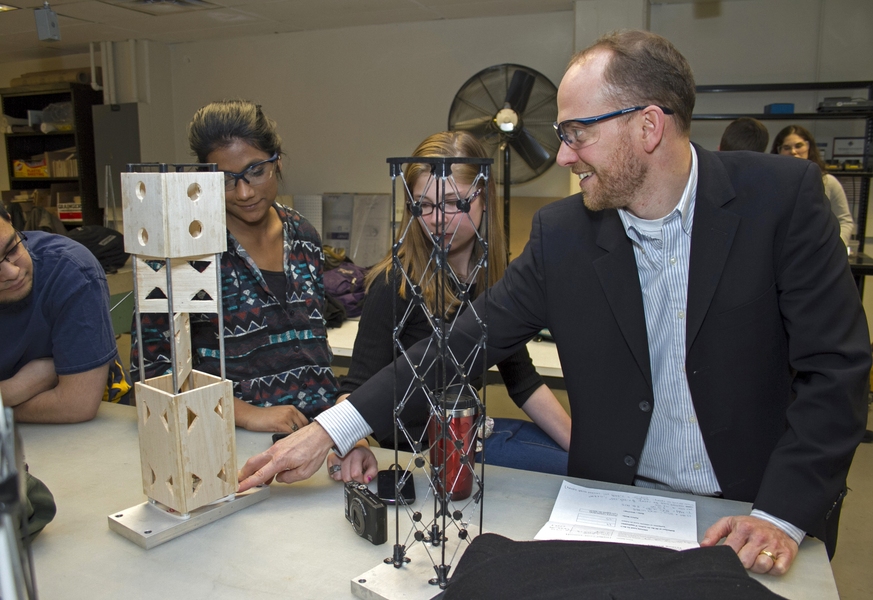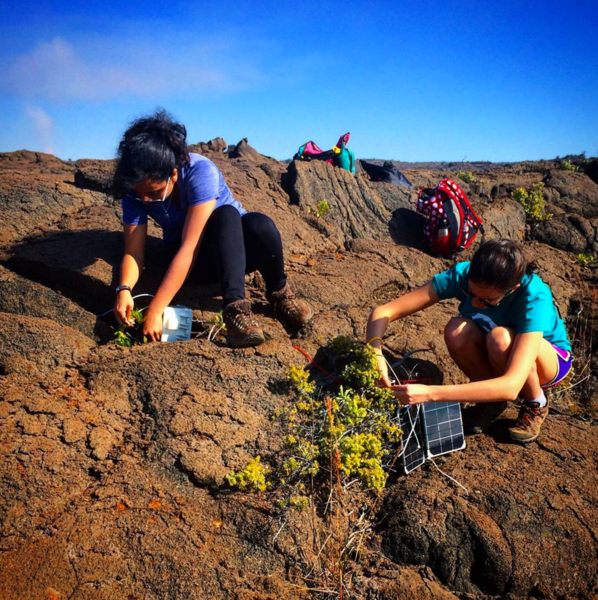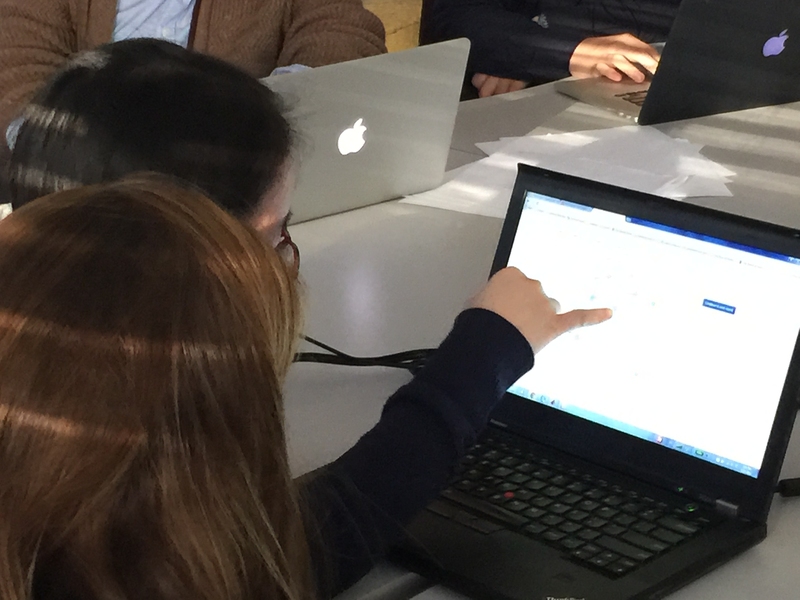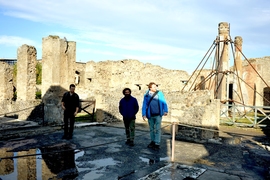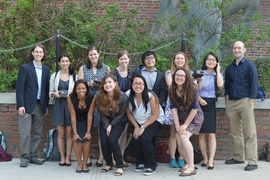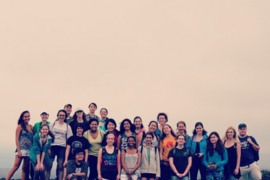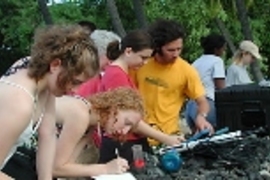The Department of Civil and Environmental Engineering (CEE), also known as Course 1, advanced its educational curricula for the 2016-2017 school year with the announcement of new minors in civil and environmental systems, in civil engineering, and environmental engineering science.
“The new and updated minors offered by CEE present exciting educational opportunities for students interested in the environment, in engineering mechanics, or in systems engineering,” said Professor Elfatih Eltahir, associate department head. “Each minor consists of a set of subjects carefully designed to deliver core knowledge in each of these areas.”
“It's great to see the new curriculum updates in Course 1,” said CEE Student Association President Tiffany Wang, a rising senior. “These new minors seem like a great way for students in other majors to incorporate their undergraduate programs with the domains of civil, environmental, and systems engineering, and it brings more variety of backgrounds into the department.”
In addition, CEE will add several new subjects for the coming academic year. For example, one is focused on ancient materials characterization, another on computational genomics, and the graduate level water resources management subject will be made available to CEE undergraduates.
All changes are part of CEE’s mission to deliver strong educational programs that serve to enhance the student experience and to prepare them to make an impact in the world.
Three new minors
The new Civil and Environmental Systems minor offers students opportunities to explore the depth and breadth of CEE as a supplement to their majors in other departments or schools. It is unique, because it combines principles and knowledge from across civil, environmental, and systems engineering into a hyperconcentrated study focused on both the built and natural worlds. It will provide students with rigorous subjects and hands-on experiences in large-scale design, computation, data analysis, mechanics, and resource management. Its subjects will cover civil and environmental engineering design, project evaluation and management, principles of energy and water sustainability, urban networks, transportation systems modeling, and water resource systems.
The Environmental Engineering Science minor makes the popular Traveling Research Environmental Experiences (TREX) fieldwork during MIT's Independent Activities Period (IAP) a program requirement, because field research has proved essential to the CEE educational experience. Other subjects in the minor focus on ecology, microbiology, water resources, and lab subjects.
The Civil Engineering minor offers subjects that reflect the wide extent of education that now encompasses the field, including solid and fluid mechanics, materials, and labs. The minor includes 1.101 (Introduction to Civil and Environmental Engineering Design), a lab subject that focuses on hands-on design experience.
The three CEE minors complement studies for students majoring in other areas by providing a stronger foundation and greater working knowledge of mechanics, materials, the environment, and large-scale systems. This big engineering perspective — combined with a design, planning, finance, computation, or policy education — provides a comprehensive way to address our world’s most pressing challenges and opportunities.
“Opportunities to address problems due to environmental change, resource constraints, increasing needs for our infrastructure, and growing populations are critical to MIT’s mission to build a better world,” said department head and McAfee Professor of Engineering Markus Buehler. “Leaders today and tomorrow need to understand the fundamental principles and interdependencies, if we want to better manage their economies and move society forward through innovation. CEE’s work often starts with fundamental understanding of how the world works, change at the micro level, but then quickly scales systems up to impact entire regions or the globe.”
New subjects at the nexus of environment, infrastructure, people
CEE also will add new subjects to its core offerings. The new subjects added to this year’s academic calendar include 1.075 (Water Resource Systems with Professor Dennis McLaughlin) — a new undergraduate offering of the graduate subject 1.731; 1.078 (Introduction to Soil Science) with Assistant Professor Ben Kocar; 1.871 (Computational Ecology) with Assistant Professor Otto Cordero; and 1.S993 (Heritage Science and Technology) taught by Assistant Professor Admir Masic. The latter subject is a continuation of the ancient art, architecture, and archeology field research program (ONE-MA3) conducted by Masic and MIT students this summer in Italy, and is designed to include more classroom theory and laboratory practice using high-level Raman spectroscopy to build on the fieldwork.
McLaughlin’s subject will help students optimize and simulate methods for water resources management. Case studies will illustrate linear, quadratic, nonlinear programming and real-time control. Applications include river basin planning, irrigation and agriculture, reservoir operations, capacity expansion, assimilation of remote sensing data, and sustainable development.
Kocar’s subject presents the physical, chemical, biological, and genetic properties of soils and includes research field trips for students to literally “get down and dirty.” It will emphasize factors controlling soil development, plant productivity, and the fate, cycling and bioavailability of soil nutrients and pollutants.
Cordero’s new subject focuses on reconstructing the short-term ecological and long-term evolutionary dynamics of biological communities and populations using modern genomics techniques. These techniques are an important part of the skill set required for students working on microbiology across the Institute. The subject is unique, because there is currently not a subject that covers these topics at MIT.
Updates to the Master of Engineering (MEng) curricula are in the area of structural mechanics and design and have generated two new subjects — 1.562 and 1.563 — in the area of structural design. Offered by Professor John Ochsendorf, these subjects are intended as core offerings for CEE MEng students, but are open to advanced undergraduates as well as graduate students from other degree programs.
Pressing forward
The new CEE minors, coupled with the new subjects, offer fresh opportunities in understanding complex issues and finding solutions to topical areas such as feeding growing populations; air, water and soil pollution; better managing energy resources and transportation systems; reducing pandemic threats; and thwarting or mitigating cyber-physical network attacks.
“The world today critically needs the insights and innovations the civil and environmental engineering profession has to offer,” added Buehler. “Only when we are open to change, break down barriers and collaborate across disciplines are we truly prepared to improve our world and make a lasting impact. In that spirit, the new minors offer collaborative opportunities that cut across disciplines, and prepare students.”
For further information on any of CEE’s programs, please contact the Academic Programs Office at cee-apo@mit.edu.
